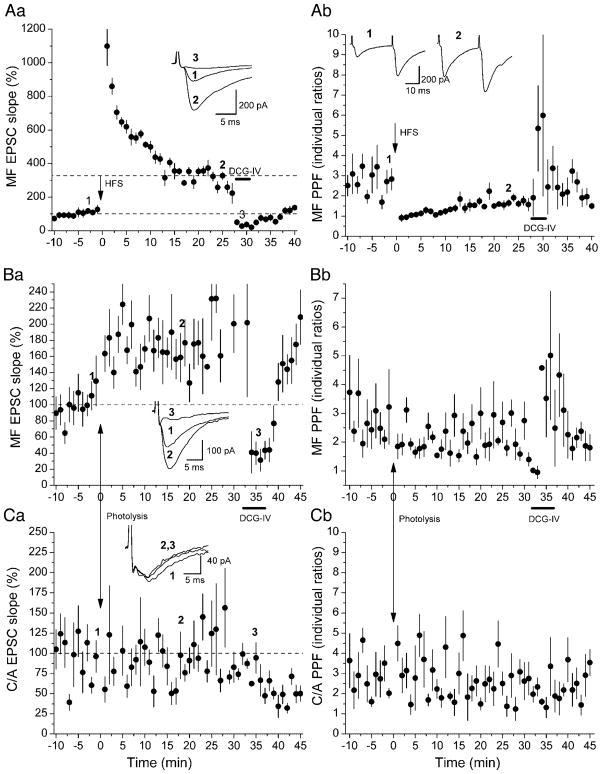Fig. 1.
Examples of high-frequency stimulation (HFS)-induced long-term potentiation (LTP) and photolysis-induced long-lasting potentiation at mossy fiber (MF) synapses. Rising slopes of the 1st of paired excitatory postsynaptic currents (EPSCs) and corresponding paired-pulse facilitation (PPF) at 30-ms intervals are plotted on left and right panels, respectively. A: HFS of mossy fibers (3 1-s 100-Hz trains separated by 10 s) elicited LTP (Aa), with a reduction in PPF (Ab). (2S,1′R,2′R,3′R)-2-(2,3-dicarboxycyclopropyl)glycine (DCG-IV; 1 μM) was added to the perfusion medium during the bar. B and C: photolysis of caged Ca2+ elicited a long-lasting potentiation in mossy fiber synapses (Ba), but had no effect in commissural/associational (C/A) afferents (Ca: from a different neuron). DCG-IV selectively inhibited mossy fiber response without effect on C/A responses. Uncaging Ca2+ also induced a small but significant reduction in PPF in mossy fiber input (Bb), with no change in C/A input (Cb). Each point plots the average of 6 consecutive EPSCs (±SE). Insets: sample recordings.

